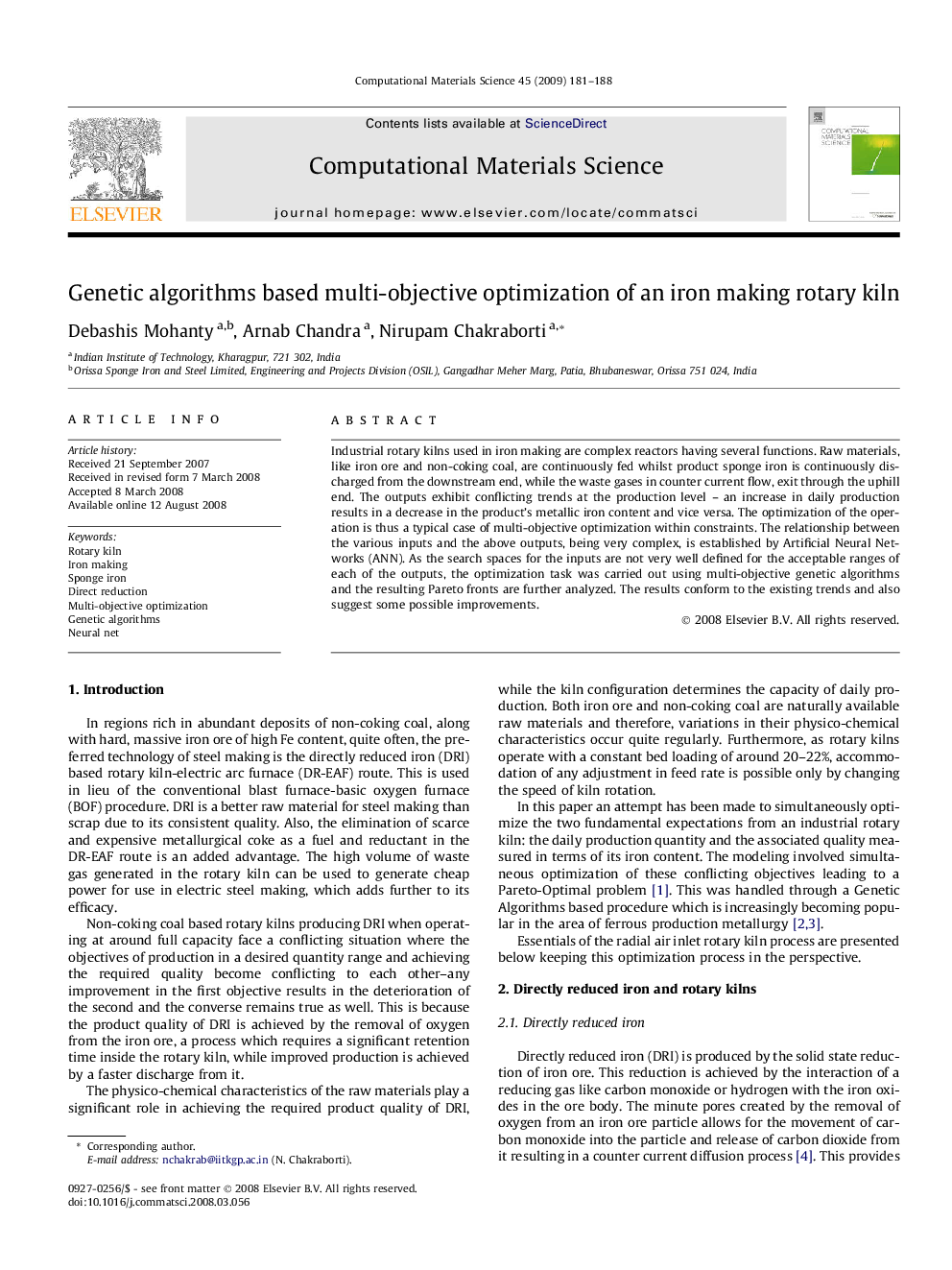| Article ID | Journal | Published Year | Pages | File Type |
|---|---|---|---|---|
| 1563705 | Computational Materials Science | 2009 | 8 Pages |
Industrial rotary kilns used in iron making are complex reactors having several functions. Raw materials, like iron ore and non-coking coal, are continuously fed whilst product sponge iron is continuously discharged from the downstream end, while the waste gases in counter current flow, exit through the uphill end. The outputs exhibit conflicting trends at the production level – an increase in daily production results in a decrease in the product’s metallic iron content and vice versa. The optimization of the operation is thus a typical case of multi-objective optimization within constraints. The relationship between the various inputs and the above outputs, being very complex, is established by Artificial Neural Networks (ANN). As the search spaces for the inputs are not very well defined for the acceptable ranges of each of the outputs, the optimization task was carried out using multi-objective genetic algorithms and the resulting Pareto fronts are further analyzed. The results conform to the existing trends and also suggest some possible improvements.
